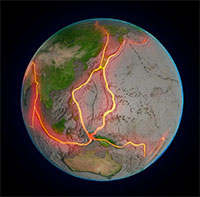Vietnamese people can even nap on any “terrain” from sofas, floors, saddles, folding chairs…
Siesta in Spanish means nap or nap in the early afternoon.
In Spain (13-16h), Italy (13-15h) and Greece (14-16h), most shops are closed during this time to sleep. However, according to Maeil Business Newspaper (Korea), afternoon nap in Vietnam is different from nap in Western countries.

Napping in Vietnam is different from napping in Western countries.
“During the day, when the temperature soars above 30 degrees is the perfect time to replenish energy with a nap amid a sharp drop in work efficiency. In other words, it goes beyond simple customs and is the wisdom in life that Vietnamese people have practiced for a long time “.
Hong Seong-won, head of Hanjin Shipping’s Vietnam headquarters in 2006, said: ” At first, I was surprised to see local staff sleeping on mattresses on the floor after lunch, preventing me from entering the office. room and had to walk around “.
Or coach Park Hang Seo himself also shared in Goodmorningvietnam , a Korean newspaper about life in Vietnam, that at first he was quite unfamiliar with the napping culture of Vietnamese people.
” A Vietnamese culture is napping which I didn’t understand at first. But in my experience, napping in hot weather is effective, so the quality of training will be higher. Now, I also often take a nap ,” he said.
The Korean newspaper said that napping in Vietnam is a social phenomenon that can be found everywhere.
According to a local resident with Maeil Business Newspaper : ” Most of the people walking in the hot sun are foreigners, including Koreans “.

A motorbike taxi driver sleeps on a motorbike in Vietnam. (Photo: Care Connect Vietnam).
The Japanese do not have the habit of napping, but in recent years, the people of the land of the rising sun have more or less changed their nap habits. Some companies design more break rooms, encouraging employees to take lunch breaks because naps of about 30 minutes will improve work performance.
Nagiho Watanabe, an employee of AGS Japanese corporation in Vietnam, revealed that when he first came to Vietnam, he was quite surprised by the napping culture of Vietnamese people.
” After we finished lunch, the electricity in the office gradually went out and we noticed that almost 90% of the Vietnamese employees had gone to sleep. After observing them for a few days, I noticed that most people all bring pillows, cushions, blankets, blindfolds… to the office as napping equipment .”
Watanabe added: “In the city, I often see many people sleeping soundly on motorbikes or taking a nap in a hammock is also a very common phenomenon. In addition, many things can be used as pyjamas (pillows, blindfolds). , blankets…) are sold in many places such as shops and markets in the city.
I’m not sure if those are necessarily meant for napping, but from the state of the company, I’m guessing that a lot of people use them as nappies .”
On its website, Vietnam-based Japanese software company Care Connect Vietnam, is also quite interested in the nap habit of Vietnamese people.
When you think of a nap, you might picture napping on a soft spot like a cushion or sofa.
However, if you walk the streets in Vietnam, you will find people sleeping in any terrain. The feeling of balancing the motorbike taxi drivers in the car is quite impressive, or so is parking under a tree on the road or under the eaves of a building and taking a nap.”

Short naps of about 30 minutes will improve work performance.
According to The New York Times , in a study published in 2007, researchers at the Harvard School of Public Health found that regular 30-minute naps were associated with an increased risk of death from heart disease over a 6-year period fell to less than 37% compared with those who never took a nap.
Some studies also show that the proportion of adults in the Mediterranean who die from heart disease is lower than in the United States and Northern Europe, thanks in part to the potential role of naps by sleep at any time. Any point of the day acts as a valve to release the stress of everyday life.
“We all know that the three pillars of health are diet, exercise, and sleep, and sometimes, people forget the importance of sleep,” said Dr. Alex Chediak. at the American Academy of Sleep Medicine.
Night sleep has been studied much more thoroughly than naps. But the researchers suggest that the benefits of nighttime sleep also accrue from naps.
American expert Michael Twery revealed: “The human circadian clock has two cycles a day, with two declines. For most people, one of those drops happens right after lunch. It’s a time when many people probably feel a little drowsy, less alert .”
Dr Manolis Kallistratos, a cardiologist at Asklepieion Voula General Hospital in Athens, said: ” Due to the 9am to 5pm working culture and hectic daily life, napping today has become a habit. , almost a privilege “.
An American company has even upgraded the nap room, equipped with full body massage chairs that combine aromatherapy and movement. It can simulate the sounds and sights of the beach or the murmur of a stream.

